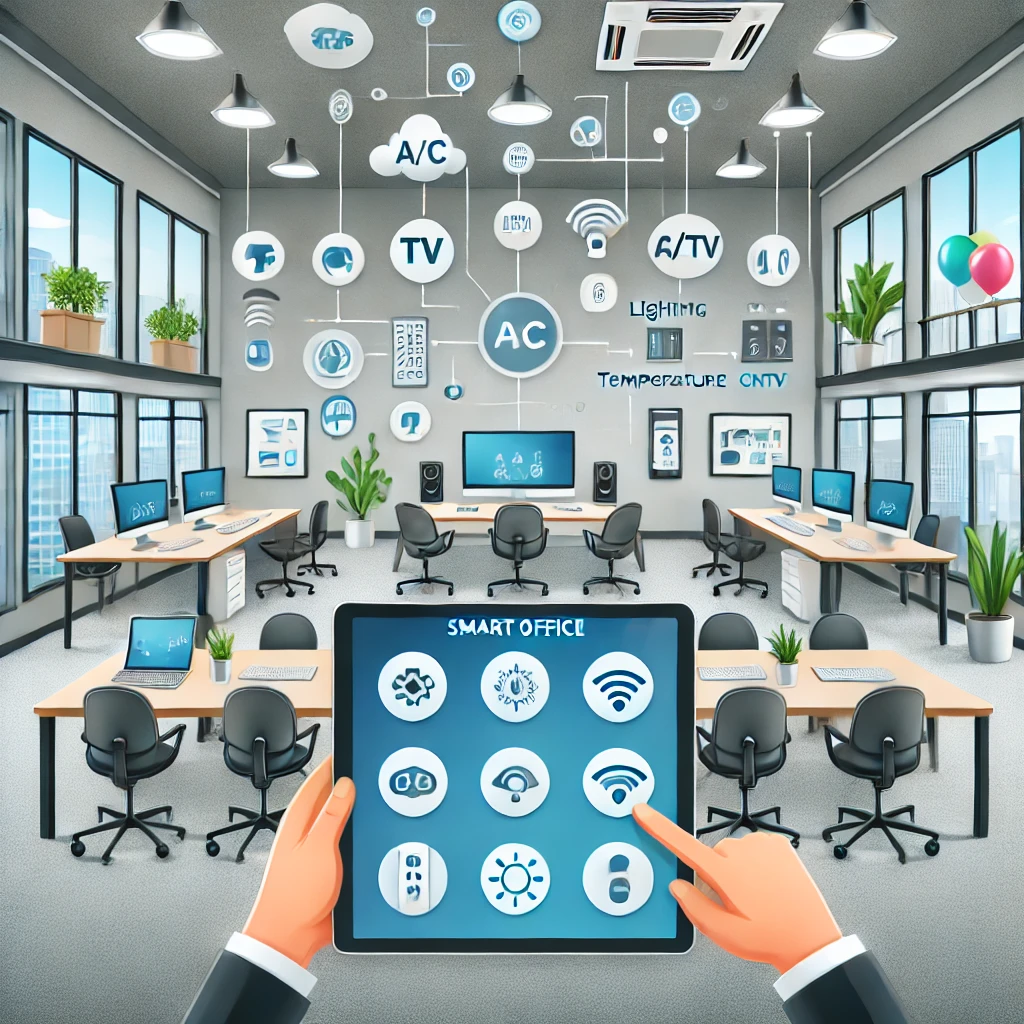What does smart office mean and what role do mobile device management, kiosk mode and smart office apps play?

The concept of the smart office has become a central element in many work environments. But what exactly does this term mean, and which technologies play a crucial role in it? In this article, we explore the significance of tablets and smartphones, kiosk mode, also known as lockdown mode, as well as Mobile Device Management (MDM) and how they are revolutionizing the smart office.
What is a Smart Office?
Smart Office Definition: A smart office is a work environment improved through the integration of advanced technologies to increase efficiency, productivity, and flexibility. This includes connected devices, automated systems, and data-driven decisions working together to enhance the work experience.
Typical features of a smart office include:
Connected Devices and IoT: Devices and systems that communicate with each other to automate and improve operations like ventilation or climate control.
Mobile Work Solutions: The use of smartphones and tablets allows employees to be productive anytime and anywhere.
Data Analysis and AI: Utilizing data analysis and artificial intelligence to make informed business decisions.
Importance of Tablets and Smartphones
Tablets and smartphones are central components of a smart office. Here are some of their advantages:
Flexibility: Employees can work from anywhere, which is especially important in times of remote work and home office.
Productivity: Modern apps and tools enable tasks to be completed more efficiently.
Communication: Quick and easy communication through messaging apps, video calls, and collaborative platforms.
Kiosk Mode and Lockdown Mode
Kiosk mode, also known as lockdown mode, is a feature that restricts devices to the use of specific applications or functions. This is particularly useful in smart offices to ensure security and productivity. Operating devices in kiosk or lockdown mode is only possible if the devices are managed through an MDM system.
Public Areas: Tablets in reception areas or conference rooms that only allow certain functions like visitor registration or booking meeting rooms. Additionally, functions like lights, heating, air conditioning, or locking systems can be centrally controlled via tablets in kiosk or lockdown mode.
Training and Presentations: Devices that can only access specific training content or presentation materials, preventing misuse by trainees and providing only the necessary apps for the intended purpose.
Mobile Device Management (MDM)
MDM plays a crucial role in the smart office by enabling the management and security of all mobile devices within the network. With MDM, you can activate lockdown mode, ensuring that only the designated apps can be used on the device, e.g., for controlling lights, heating, or air conditioning.
Key functions of MDM include:
Device Management: Centralized control over all devices, including installing updates and apps.
Security: Protection against data loss and cyberattacks through encryption and remote wipe functions.
Compliance: Ensuring all devices follow company policies and legal requirements.
Practical Applications and Benefits
A smart office using tablets, smartphones, and effective MDM can offer significant advantages:
Increased Efficiency: Automated processes and instant access to necessary resources enable employees to work faster and more effectively.
Improved Collaboration: Mobile devices and cloud-based apps promote teamwork and communication within the team.
Enhanced Security: By using MDM and kiosk mode, sensitive company data can be better protected.
Typical Smart Office Apps
Typical smart office apps aim to increase efficiency and productivity in modern work environments. Here are some examples:
Communication and Collaboration Apps:
Slack: A platform for real-time communication and collaboration, allowing the creation of channels for various projects and teams.
Microsoft Teams: A central hub for teamwork, integrating chat, meetings, notes, and attachments.
Zoom: A video conferencing software ideal for virtual meetings.
Project Management Apps:
Trello: A visual project management software using Kanban boards to organize tasks and projects.
Asana: A tool helping teams plan, organize, and track their work.
Monday.com: A flexible project management tool enabling teams to customize workflows and manage projects efficiently.
Productivity Apps:
Evernote: A note-taking app allowing the storage and organization of text notes, audio recordings, and images.
Google Workspace: A suite of productivity and collaboration tools, including Google Docs, Google Sheets, and Google Drive.
Notion: An all-in-one workspace for notes, tasks, projects, and databases.
Automation and Integration Apps:
Zapier: A platform enabling the connection of various apps and services to automate workflows.
IFTTT (If This Then That): A service allowing users to create automated connections between different apps and devices.
Security and Management Apps:
Cortado MDM: A mobile device management solution facilitating the management and security of mobile devices in companies.
LastPass: A password manager helping to securely store and manage passwords.
Okta: An identity and access management platform providing Single Sign-On (SSO) and Multi-Factor Authentication (MFA).
Another useful smart office app is ezeep, simplifying printing in office environments.
Conclusion
The smart office is the future of the modern workplace. By using tablets and smartphones, kiosk mode, and mobile device management, companies can create a more productive, flexible, and secure work environment. Now is the perfect time to integrate these technologies and reap the benefits of a smart office.
To quote Uwe Hörmann, Senior Partner Civil Economics, Energy and Infrastructure, at Roland Berger Management Consultants: “The smart office is a data-driven space where employees can feel comfortable, stay healthy, flexible, and productive.”